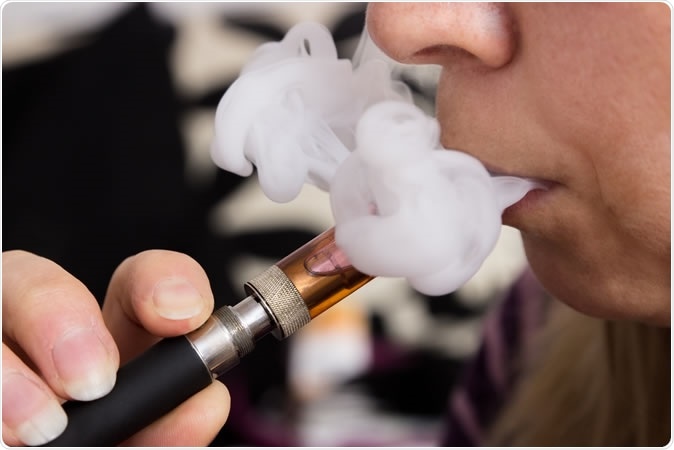
The case details were published in the latest issue of the Archives of Disease in Childhood. The doctors wrote that the condition was “likely to have been an exaggerated immune response to one of the chemicals found in e-cigarette fluid.”
Soon they realized that his lung inflammation was caused due to an exaggerated immune response to certain chemicals present in the fluids that he had smokes as vapours in the e-cigarettes. He was admitted to the hospital, after which his condition deteriorated rapidly and he developed respiratory failure. He was put on external support from breathing called extracorporeal membrane oxygen, or ECMO along with intravenous steroids to bring down the inflammation and antibiotics to curb infections. This was continued for ten days when his condition worsened, and he developed myopathy or severe muscle weakness. This was caused due to his prolonged illness and he now needed extensive physical rehabilitation as well.
On gathering history, the team of doctors found out that he had recently started using e-cigarettes and was using them frequently with two types of e-cigarette liquids with flavourings. Both types of liquids were examined to see their chemical composition and flavourings. He had not been exposed to other allergens including exposure to farm animals or birds. A year previously he admitted he had smoked cannabis.
He was finally discharged from the hospital after 35 days with oral medications and advice for physical rehabilitation. He is still on oral steroids for his lung inflammation, explain the doctors treating him. At the time of his illness his lung scans and images as well as biopsy samples showed that he had hypersensitivity pneumonitis. His symptoms persisted even two months after his hospital discharge said the researchers.
At his follow up visit, the doctors tested his skin reactivity with a small amount of the vaping liquid and found that his symptoms immediately worsened. This meant that he was allergic to one or more of the chemicals present in the vaping fluids. His symptoms finally cleared 14 months after his initial admission and his lung functions returned to normal. The doctors say that even though this could be a one-off case, the risk of allergies should not be ignored.
In conclusion, the team wrote, “There are two important lessons here. The first is always to consider a reaction to e-cigarettes in someone presenting with an atypical respiratory illness. The second is that we consider e-cigarettes as ‘much safer than tobacco’ at our peril.”
The Public Health England (PHE) last year in a report suggested that vaping is 95 percent less harmful than conventional cigarettes and helped around 20,000 people quit smoking. John Britton, director of the UK Centre for Tobacco & Alcohol Studies spoke about this case saying, “It's not absolutely clear what has happened here, but it looks like an allergy to an inhaled substance. There have been a very small number of cases of this condition reported in vapers worldwide, so I think we can conclude that it happens but is thankfully very rare.” He added, “Smoking kills half of long-term smokers. Rare conditions like this need to be recognised, but there is no comparison: vaping is far less risky.”
The US CDC however says that there have been 2,051 cases of vaping-related lung injury across 49 states, US Virgin Islands and District of Columbia up until 5th of November this year. Some of the additives of vaping fluids such as THC have been blamed. However the CDC reports some cases of lung injury with vaping fluids that do not contain THC.
In their Morbidity and Mortality Weekly Report (MMWR) this September, they report 12 deaths due to these injuries and these were from 10 different states. The average age of the cases was 23 years and 62 percent of the cases were between ages 18 and 34 years. Two in three of the cases were men.
Tetrahydrocannabinol or THC was commonly blamed. Robert R. Redfield, MD, director of the CDC, had said in a statement, “CDC is committed to finding out what is causing this outbreak of lung injury and death among individuals using vaping products. We continue to work with FDA and state partners to protect the nation from this serious health threat.”
Journal reference:
Nair N, Hurley M, Gates S, et alLife-threatening hypersensitivity pneumonitis secondary to e-cigarettesArchives of Disease in Childhood Published Online First: 11 November 2019. doi: 10.1136/archdischild-2019-317889, https://adc.bmj.com/content/early/2019/10/21/archdischild-2019-317889.info






No comments
Post a Comment